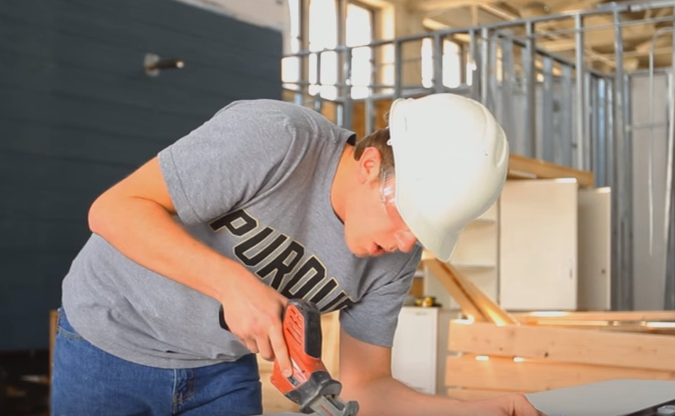BTN.com staff, April 15, 2016
During football and basketball games, BTN LiveBIG will spotlight notable examples of research, innovation and community service from around the conference. In-Game stories will provide more background on these features, and the opportunity to view the videos again.
It was a simple question, but by no means an easy one to answer: How do you want to change the world?
Kirk Alter, an associate professor at Purdue University, put that query before the students in his Monday night class in sustainable construction. And putting their heads together, those students came up with a plan.
?This year they decided they wanted to look at the community, and they wanted to address the issue of housing,? Alter said. ?Specifically, housing for people in three demographics: the homeless, people re-entering [society] from prison and battered women.?
To help address those issues, the students wanted to build a tiny home, a showcase for the growing movement that says ?build better, not bigger.?
Since the late 1990s, the tiny-home movement has served as a vocal, visual and structural counterpoint to the large, energy-consuming ?McMansion.? Arguing that most people can live comfortably in less than 1,000 square feet, tiny-home designers maximize the use of space and focus on essentials. The houses occupy less land, consume less energy and require far fewer materials than the average American home.
The students? project, though tiny by design, still required the same careful planning and hard work that goes into constructing a full-sized house.
?One of the first things in any project is to develop a budget,? Alter said. ?We had to do this for $10,000 or less. That was the point the students?? resourcefulness kicked in.?
[btn-post-package]The team already decided to make their tiny home portable, an added benefit to building small. A new travel trailer, however, would cost $8,000-9,000. So they took to the Internet, and after a little searching on eBay and Craigslist, they found a trailer for $250. The only drawback was the condition of the rig, which was nearly totaled in an accident. The team persevered and with a little care, they had the platform for their project.
The students also made a commitment to sourcing sustainable materials - another cornerstone of the tiny-home movement - despite the added cost and difficulty they required.
?A big part of sustainability is in the materials,? Alter explained. ?We want to reuse materials ? So we?d have students going to Indianapolis and Chicago sourcing materials, and they did a great job. They learned a lot doing that.?
Beyond the very tangible accomplishment of creating their own tiny home, the students walked away with some valuable lessons about the importance of community and the positive impact they can have on it. Their tiny home is slated to serve as a living space for an individual or family in transition in the West Lafayette, Ind., area.
?One of the things that the students have learned,? Alter said, ?is that we don?t need heroes, we need partners - partners in our communities.?
By John Tolley








